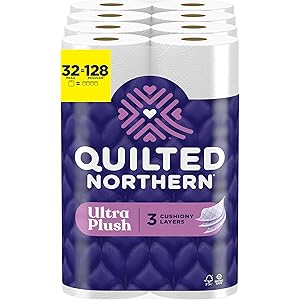Bounty Quick Size Paper Towels, White, 8 Family Rolls = 20 Regular Rolls (Packaging May Vary)
$34.00 (as of October 12, 2025 17:46 GMT +00:00 - More infoProduct prices and availability are accurate as of the date/time indicated and are subject to change. Any price and availability information displayed on [relevant Amazon Site(s), as applicable] at the time of purchase will apply to the purchase of this product.)Understanding Antifungal Medications
Antifungal medications are essential in the treatment of fungal infections, which can affect various parts of the body, including the skin, nails, and internal organs. These medications work by targeting the cell membranes or cell walls of fungi, inhibiting their growth and reproduction. Commonly prescribed antifungal drugs include azoles, echinocandins, and polyenes, each with unique mechanisms of action and specific uses in clinical practice.
Types of Antifungal Medications
There are several classes of antifungal medications, each designed to combat different types of fungal infections. Azoles, such as fluconazole and itraconazole, are widely used for their effectiveness against a range of fungi, including Candida and Aspergillus species. Echinocandins, like caspofungin and micafungin, are particularly effective against Candida and are often used in cases of invasive candidiasis. Polyenes, such as amphotericin B, are potent antifungals typically reserved for severe infections due to their potential side effects.
Mechanism of Action
The mechanism of action of antifungal medications varies by class. Azoles inhibit the enzyme lanosterol demethylase, disrupting the synthesis of ergosterol, a critical component of fungal cell membranes. Echinocandins, on the other hand, inhibit the synthesis of beta-glucan, an essential component of the fungal cell wall, leading to cell lysis. Polyenes bind to ergosterol in the cell membrane, creating pores that result in cell death. Understanding these mechanisms helps healthcare providers choose the most appropriate antifungal therapy for their patients.
Indications for Use
Antifungal medications are indicated for a wide range of fungal infections, including superficial infections like athlete’s foot and ringworm, as well as systemic infections such as cryptococcal meningitis and invasive candidiasis. They are also used prophylactically in immunocompromised patients, such as those undergoing chemotherapy or organ transplantation, to prevent opportunistic fungal infections. The choice of antifungal therapy depends on the type of fungus, the site of infection, and the patient’s overall health.
Side Effects and Considerations
While antifungal medications are generally well-tolerated, they can cause side effects ranging from mild to severe. Common side effects include gastrointestinal disturbances, skin rashes, and liver enzyme elevations. More serious adverse effects, such as nephrotoxicity associated with amphotericin B, necessitate careful monitoring during treatment. It is crucial for healthcare providers to evaluate the risk-benefit ratio when prescribing antifungal medications, particularly in patients with pre-existing conditions.
Resistance to Antifungal Medications
Antifungal resistance is an emerging concern in clinical practice, particularly with the increasing use of antifungal agents. Fungi can develop resistance through various mechanisms, including mutations in target enzymes and increased efflux of the drug from the cell. This resistance can lead to treatment failures and complicate management strategies. Ongoing research is essential to understand the mechanisms of resistance and to develop new antifungal agents that can overcome these challenges.
Administration Routes
Antifungal medications can be administered through various routes, including oral, intravenous, and topical formulations. The route of administration often depends on the severity and location of the infection. For example, superficial infections may be effectively treated with topical antifungals, while systemic infections typically require intravenous administration for optimal drug levels. Understanding the appropriate route is vital for ensuring effective treatment outcomes.
Monitoring and Follow-Up
Monitoring patients on antifungal medications is crucial to assess treatment efficacy and detect potential side effects early. Regular follow-up appointments may include laboratory tests to evaluate liver function, kidney function, and drug levels, particularly for medications with narrow therapeutic indices. Adjustments to the treatment regimen may be necessary based on these evaluations, ensuring that patients receive the safest and most effective care possible.
Future Directions in Antifungal Therapy
The field of antifungal therapy is rapidly evolving, with ongoing research aimed at discovering new antifungal agents and improving existing ones. Advances in molecular biology and genomics are paving the way for the development of targeted therapies that can specifically address resistant fungal strains. Additionally, the exploration of combination therapies may enhance treatment efficacy and reduce the likelihood of resistance development, offering hope for better management of fungal infections in the future.



